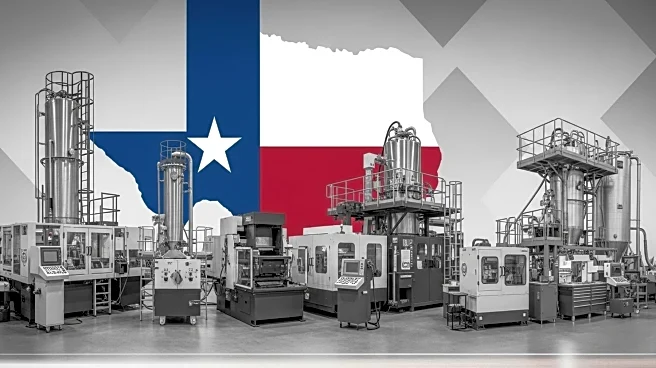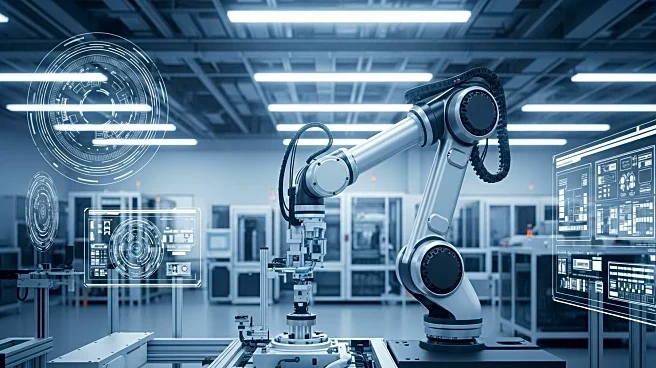What's Happening?
The Dallas Federal Reserve's latest survey indicates that Texas manufacturing growth slowed in September. The general business activity index fell to -8.7, marking a decline in production and capacity utilization. The production index dropped to 5.2, while the capacity utilization measure decreased significantly to 3.9. Additionally, the shipments index and new orders gauge both fell by eight points, reaching 6.7 and -2.6, respectively. Employment figures also showed a downturn, with the employment measure sliding to -3.4, the lowest since April. Despite these declines, expectations for manufacturing activity over the next six months remain positive, although optimism has slightly eroded.
Why It's Important?
The slowdown in Texas manufacturing growth is significant as it reflects broader economic challenges, including cost pressures and employment uncertainties. The raw materials index remains high at 43.4, indicating persistent cost pressures, while the wages and benefits index is steady at 15.9. These factors could impact profitability and operational decisions for manufacturers. The decline in employment measures suggests potential challenges in the labor market, affecting both hiring and layoffs. The survey results highlight the need for manufacturers to adapt to changing economic conditions and manage uncertainties effectively.
What's Next?
Manufacturers in Texas are expected to continue facing challenges related to cost pressures and employment uncertainties. The survey indicates that while expectations for future production and business activity remain positive, optimism has slightly decreased. Companies may need to strategize to navigate these challenges, potentially adjusting their operations and workforce management. Stakeholders, including policymakers and industry leaders, may focus on addressing these issues to support manufacturing growth and stability in the region.
Beyond the Headlines
The survey results underscore the importance of monitoring economic indicators and adapting to changing conditions. Manufacturers may need to explore innovative solutions to manage cost pressures and optimize workforce efficiency. Additionally, the broader economic environment, including potential policy changes and global market dynamics, could influence future manufacturing activity in Texas.










